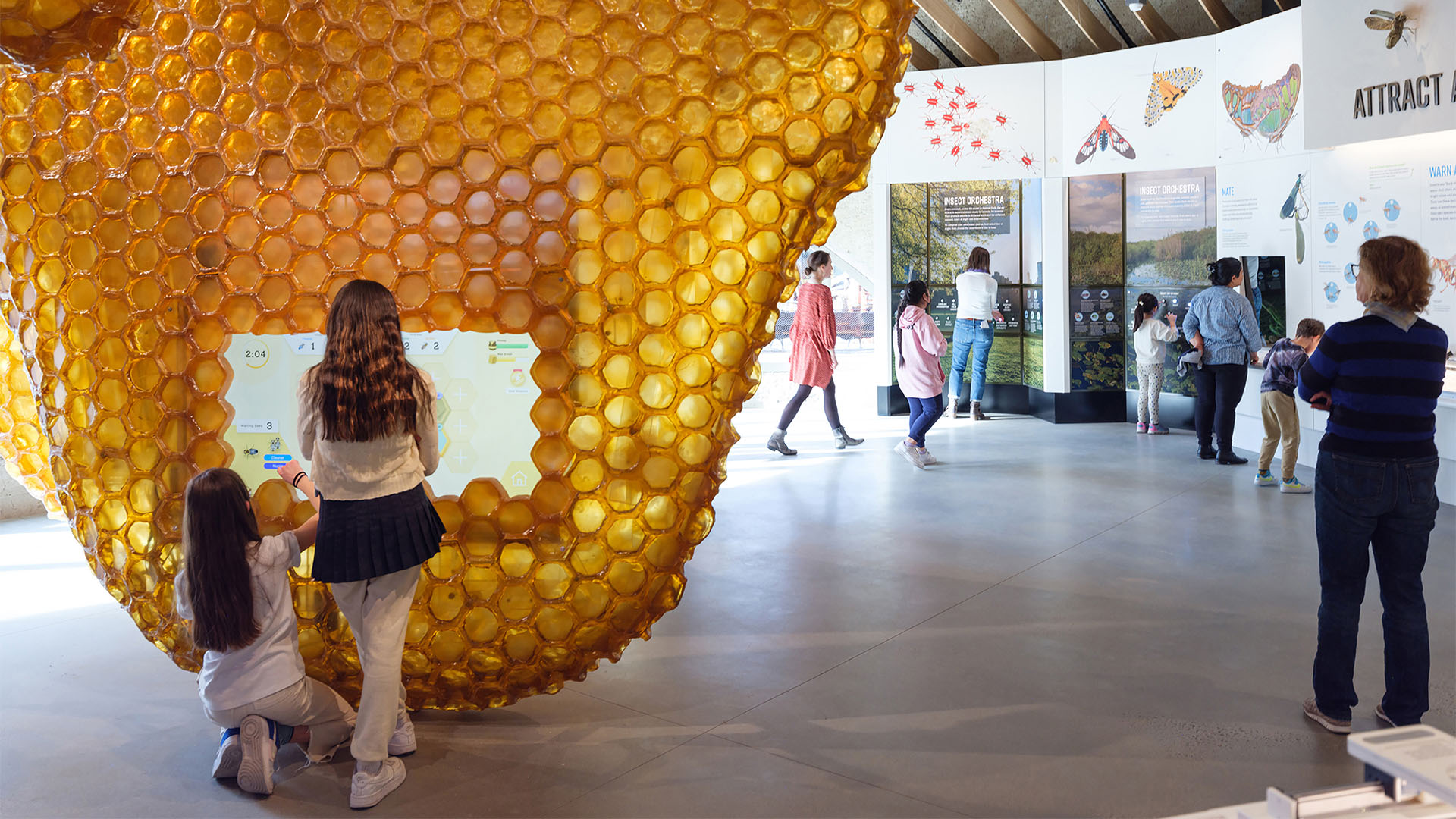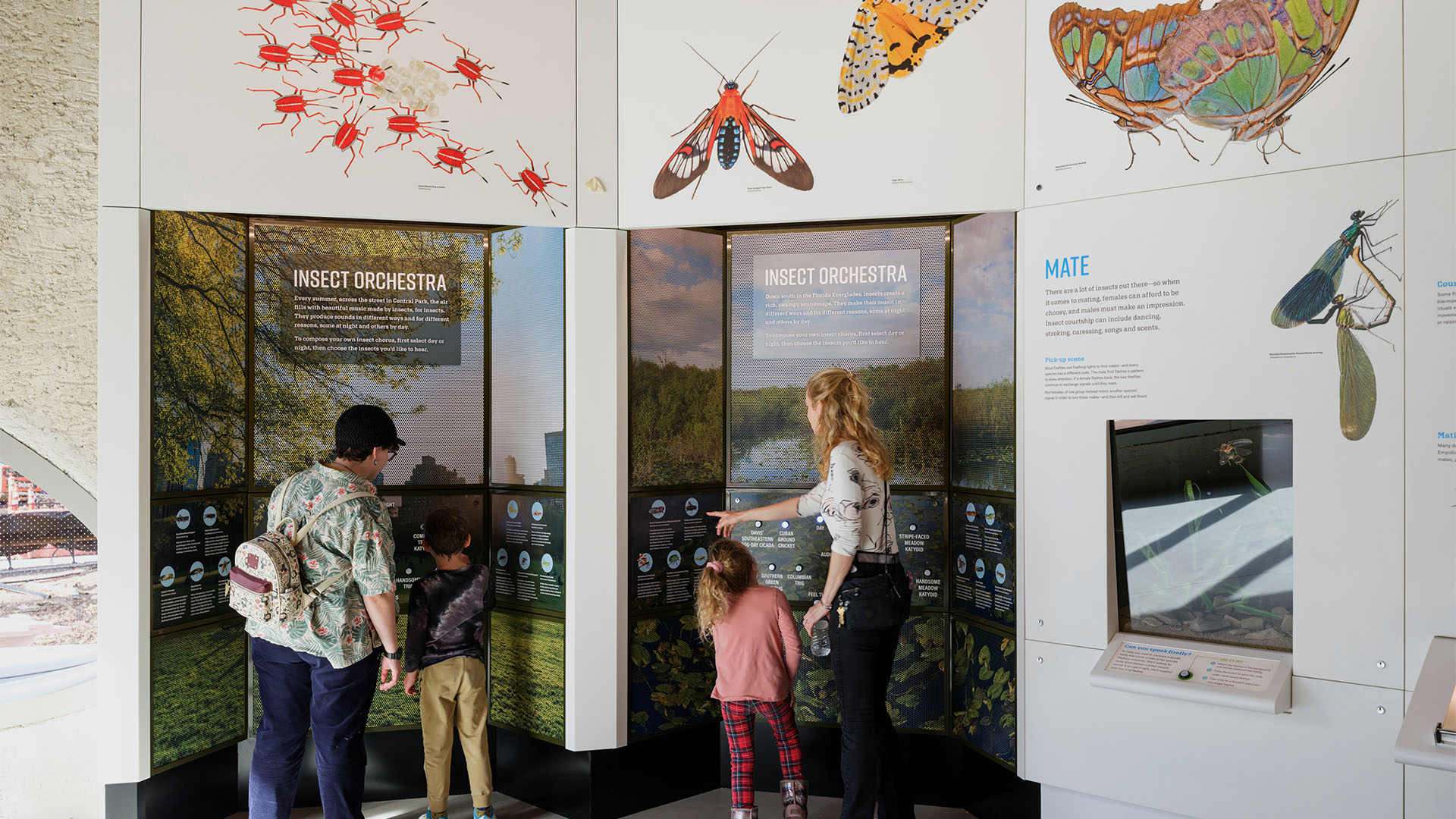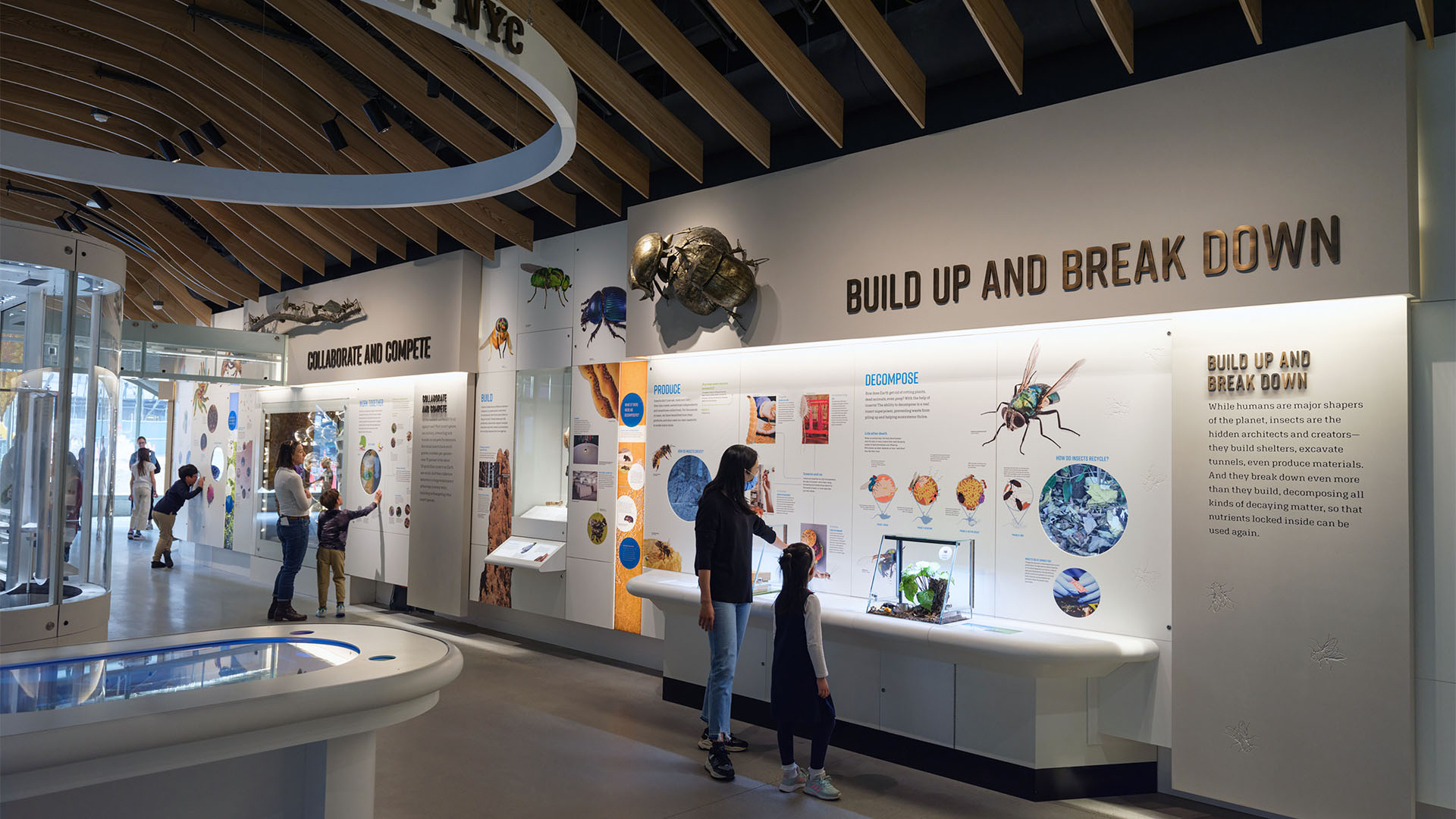Susan and Peter J. Solomon Family Insectarium
The Susan and Peter J. Solomon Family Insectarium is the first Museum gallery in more than 50 years dedicated to insects, the most diverse group of animals on Earth and one that is critical to all terrestrial ecosystems. Its goal is to increase awareness and appreciation of this much misunderstood group. The Insectarium features a mix of live, digital, and hands-on experiences that invite visitors to explore how insects fill so many essential ecological roles—as pollinators, decomposers, soil aerators, and more. Highlights include 18 tanks of live species, including one of the world’s largest displays of live leafcutter ants; a 25-times-lifesize model of a beehive with immersive video and a roleplay game that lets visitors “Be a Bee”; multiple types of visualization (magnifiers, microscope, SEMs and more) that encourage visitors to see insects in new ways; and a variety of multisensory experiences to support different learning styles and accessibility needs.
Agency
American Museum of Natural History (In-House)
Practice Area
Client
American Museum of Natural History
Industry
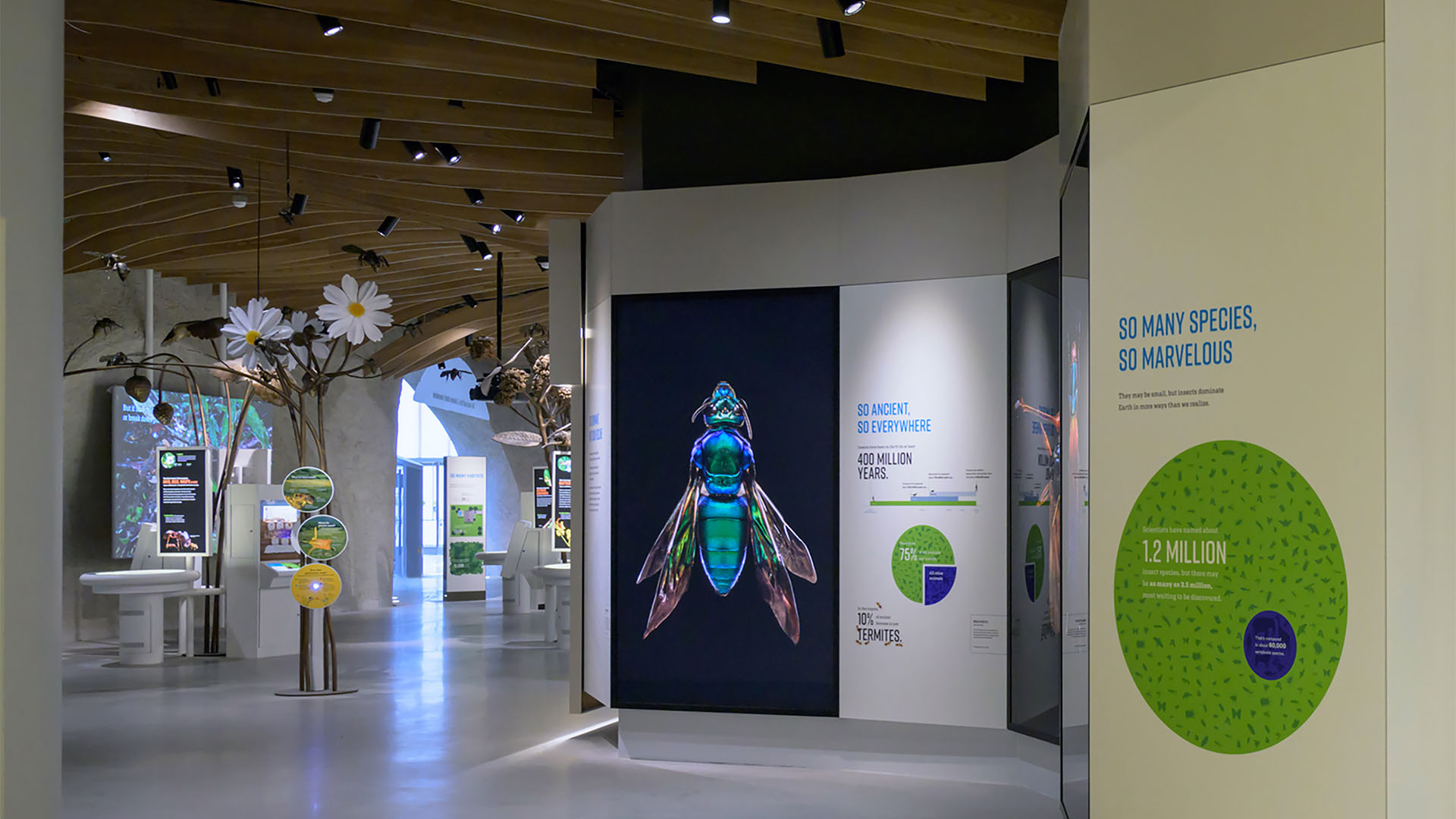
The Challenge
Building an exhibition that increased awareness and appreciation of insects while incorporating a number of multisensory experiences to support different learning styles and accessibility needs.
Project Vision
Graphic design is essential to this hall’s success, achieving a balance of wonderful and weird, educational and entertaining–and just a little bit creepy. In contrast to many of the Museum’s older halls, the design approach relies more on visual-forward content to appeal to our many younger visitors, as well as our many non-English speaking foreign visitors. Key elements include:
Large-scale, high-resolution photos of insects that reveal their hidden beauty
Playful, content-rich infographics and diagrams that invite visitors into the surprising lives and nests of insects
Custom icons for ecosystem roles (pollinator, predator, decomposer, etc.) that appear throughout the hall, reinforcing key messages about ecosystem importance
Look closely prompts for live species and pinned specimens, to encourage observation and scientific thinking
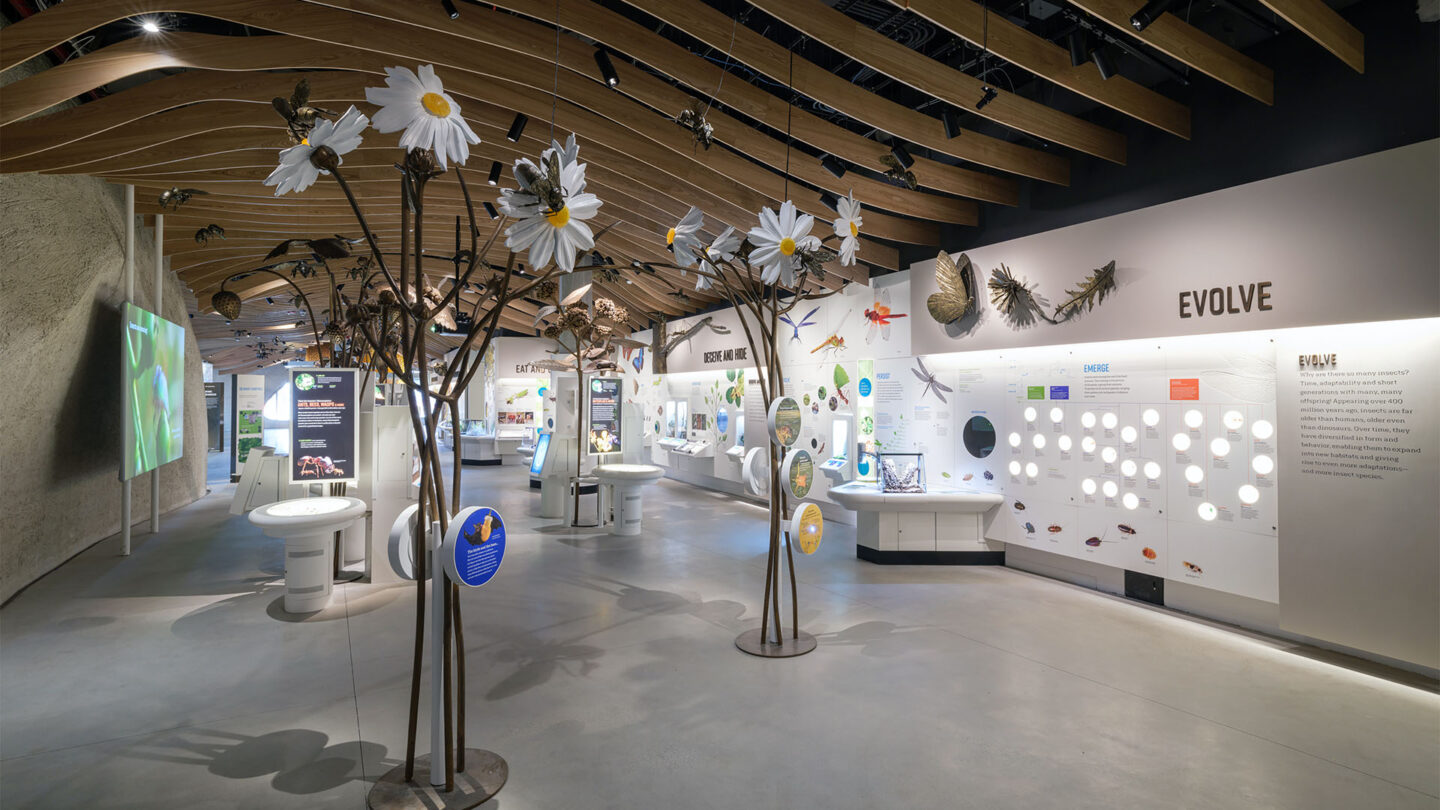
Overview of the Insectarium, with the animated pollination portal in the foreground; to the right, pinned specimens in glowing peepholes represent insect evolution
Alvaro Keding/AMNH
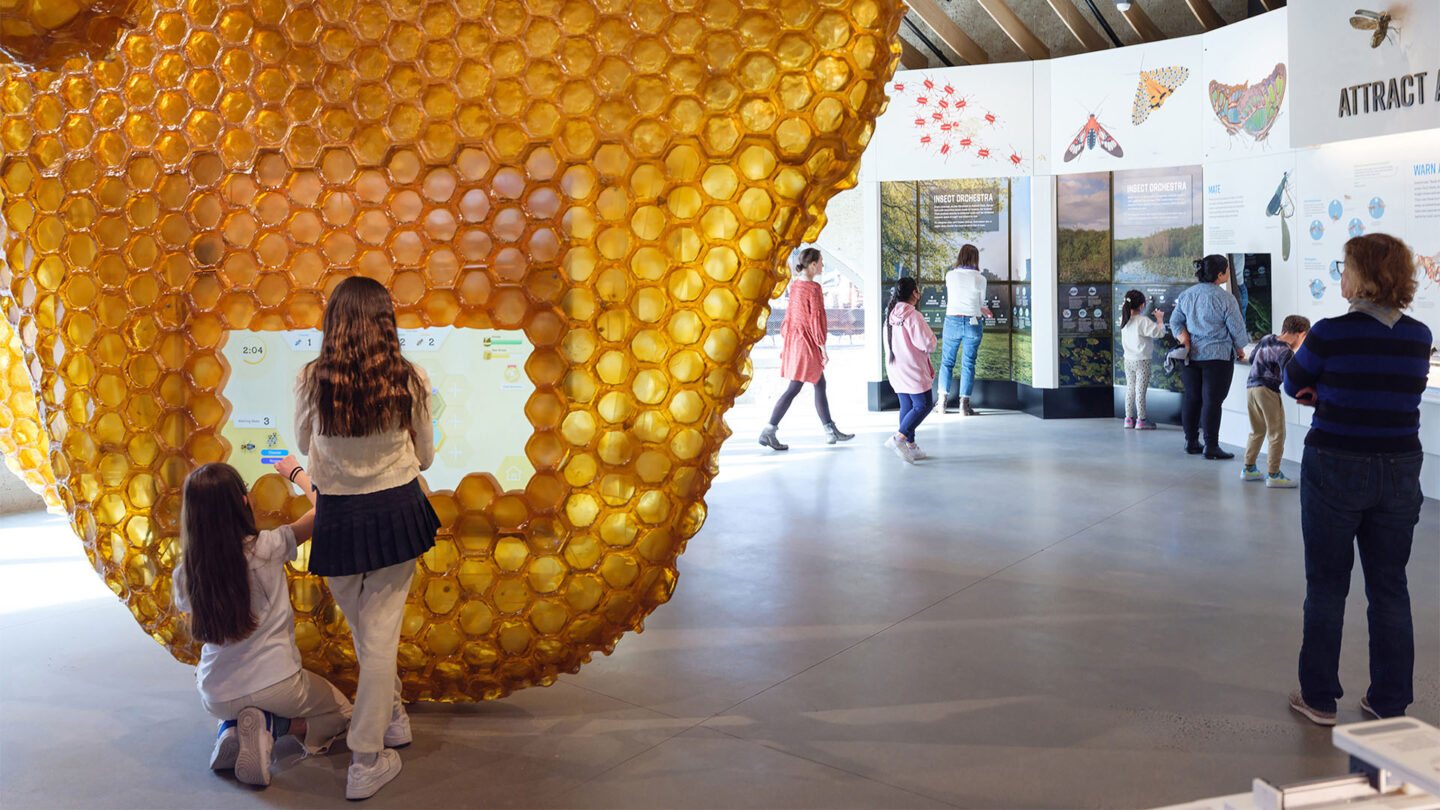
Larger-than-life models of honeybees fly throughout the space, leading visitors to a giant beehive, featuring the digital interactive “Be a Bee”
Alvaro Keding/AMNH
Design + Execution
The design provides a crisp white background for a series of colorful characters; the interpretive space is punctuated by media, touch models, live tanks and peepholes into mini-dioramas, transcending the flat surface. Visitors can interact with the content at a giant scale, activating a pollination sequence on a 12-foot tall flower; or at a micro scale, examining tiny details of pinned insects through a magnifying glass. Throughout, the visual abundance and exuberance of the space provides a joyful setting for a truly important message.
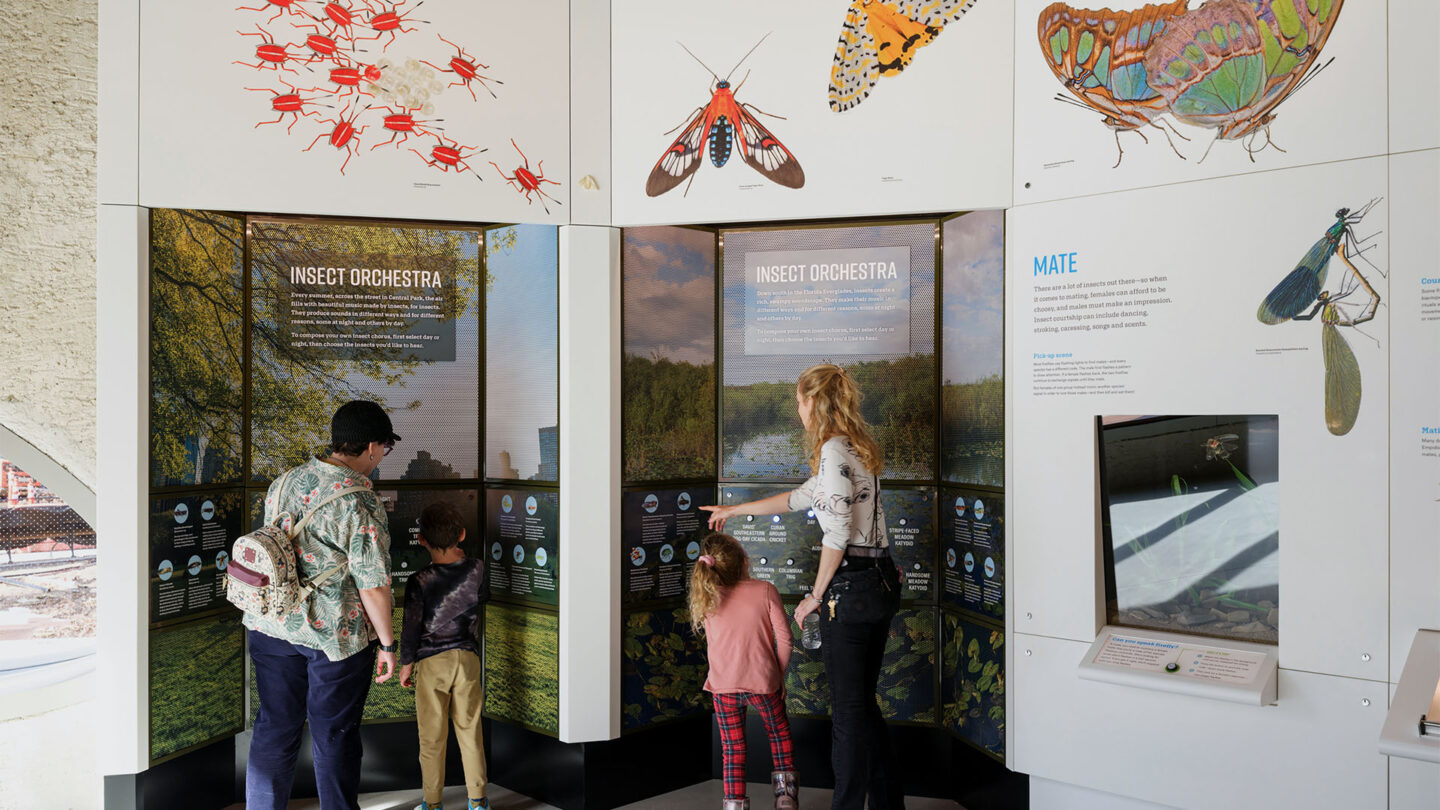
An auditory exhibit allows visitors to hear insect sounds from different locations
Alvaro Keding/AMNH
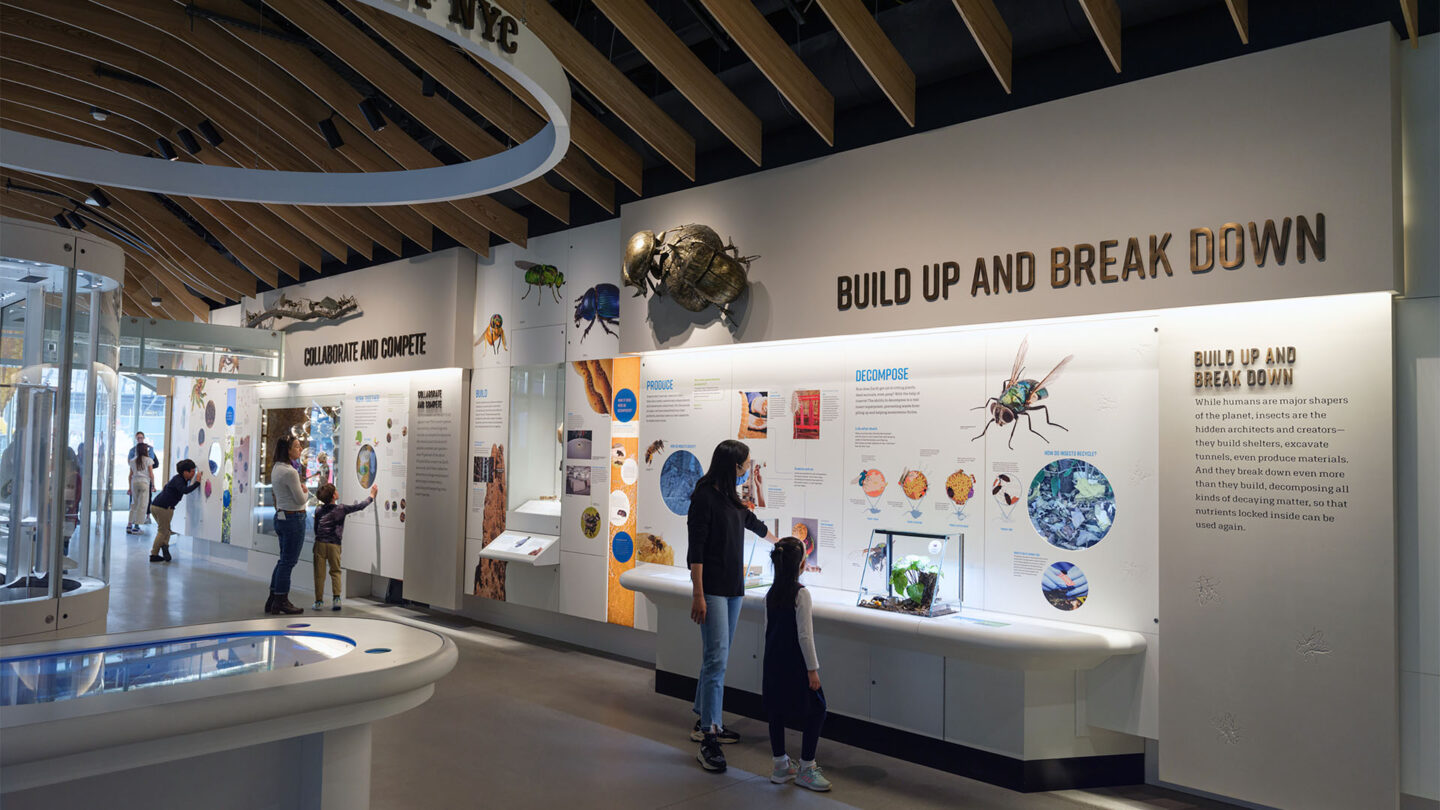
An interactive touch table lets visitors explore local insects; in the background, a large leafcutter ant tank and foraging area
Alvaro Keding/AMNH
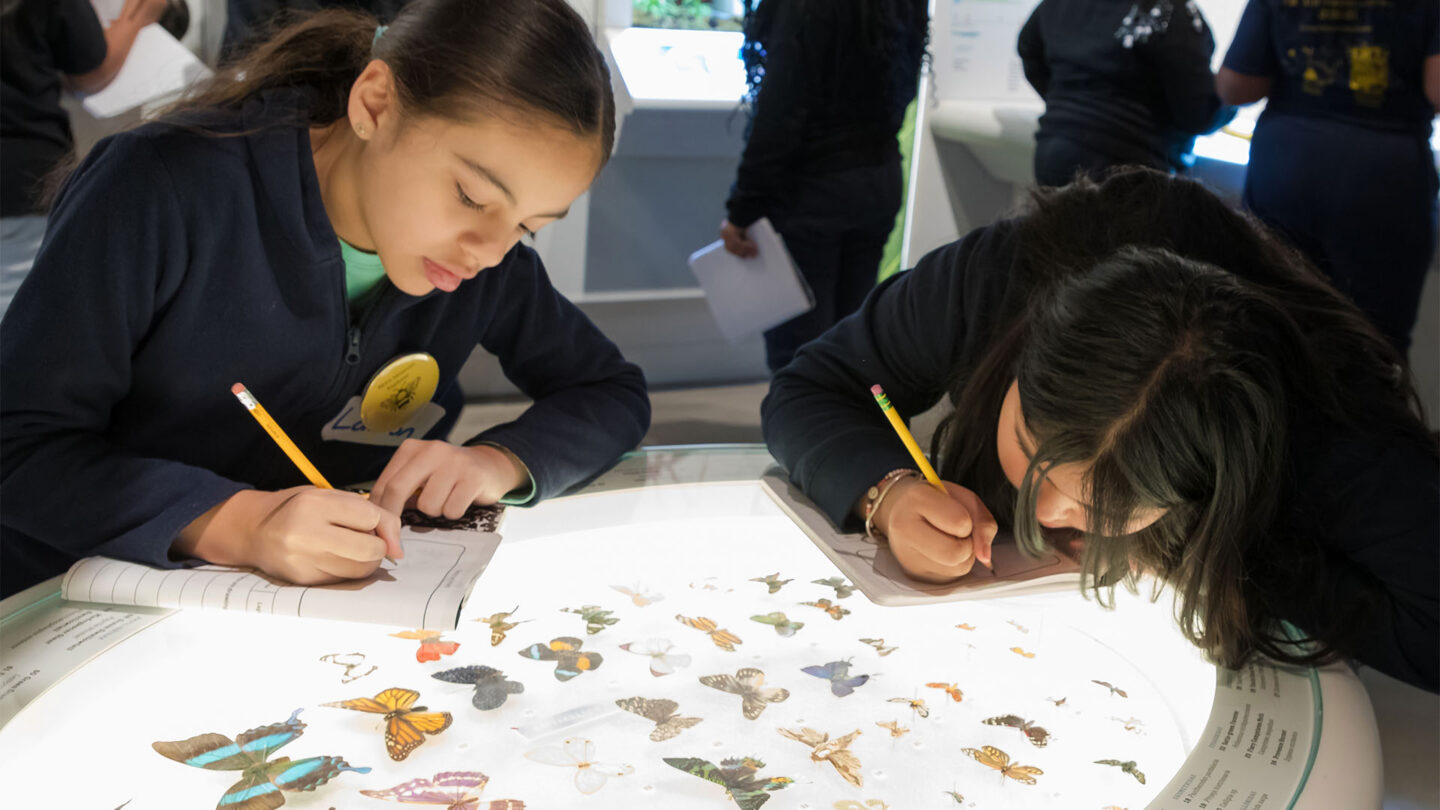
Pinned specimens showcase the diversity of the insect world
Alvaro Keding/AMNH
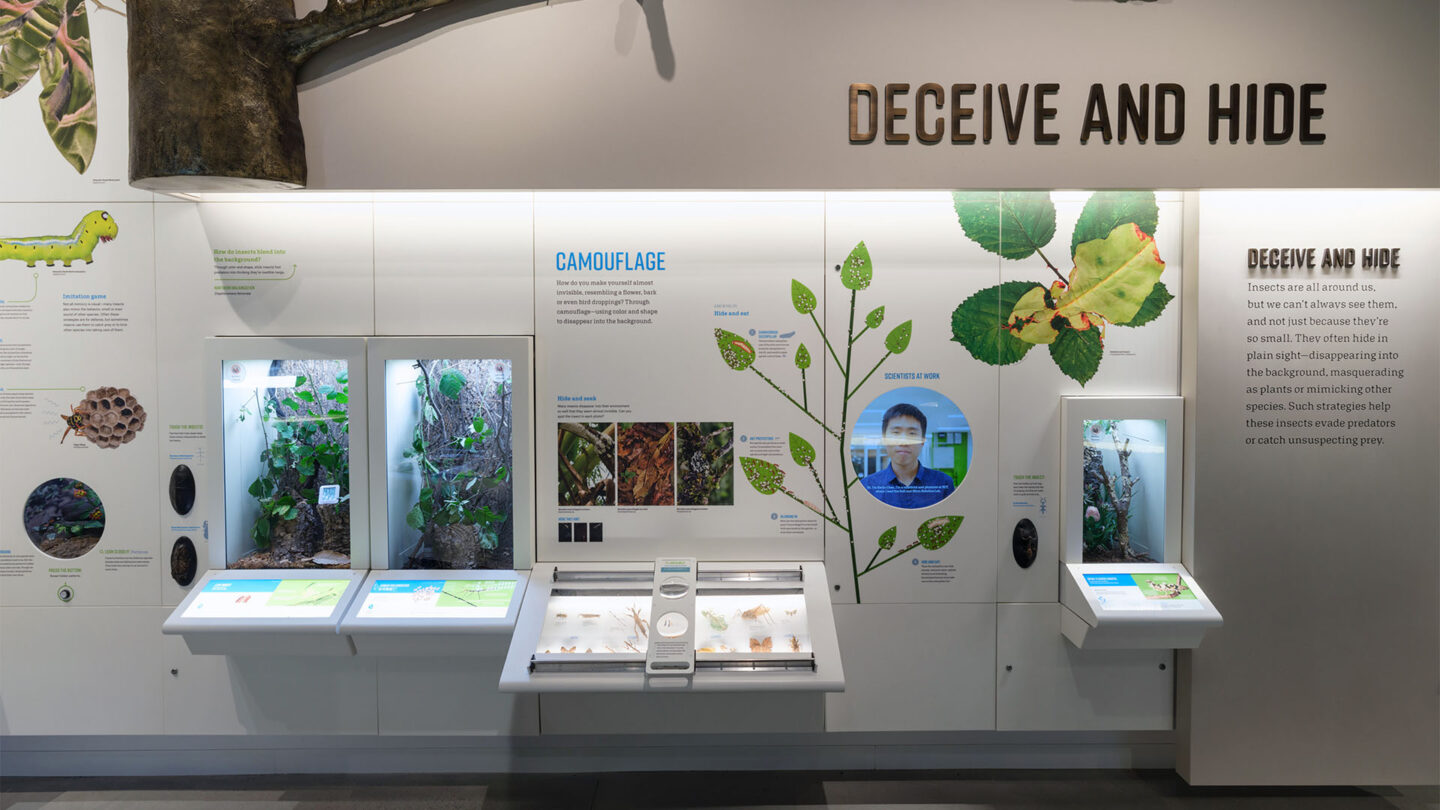
The interpretive band incorporates live insects in tanks, pinned specimens, touchable models and video to appeal to many different learning styles
Alvaro Keding/AMNH
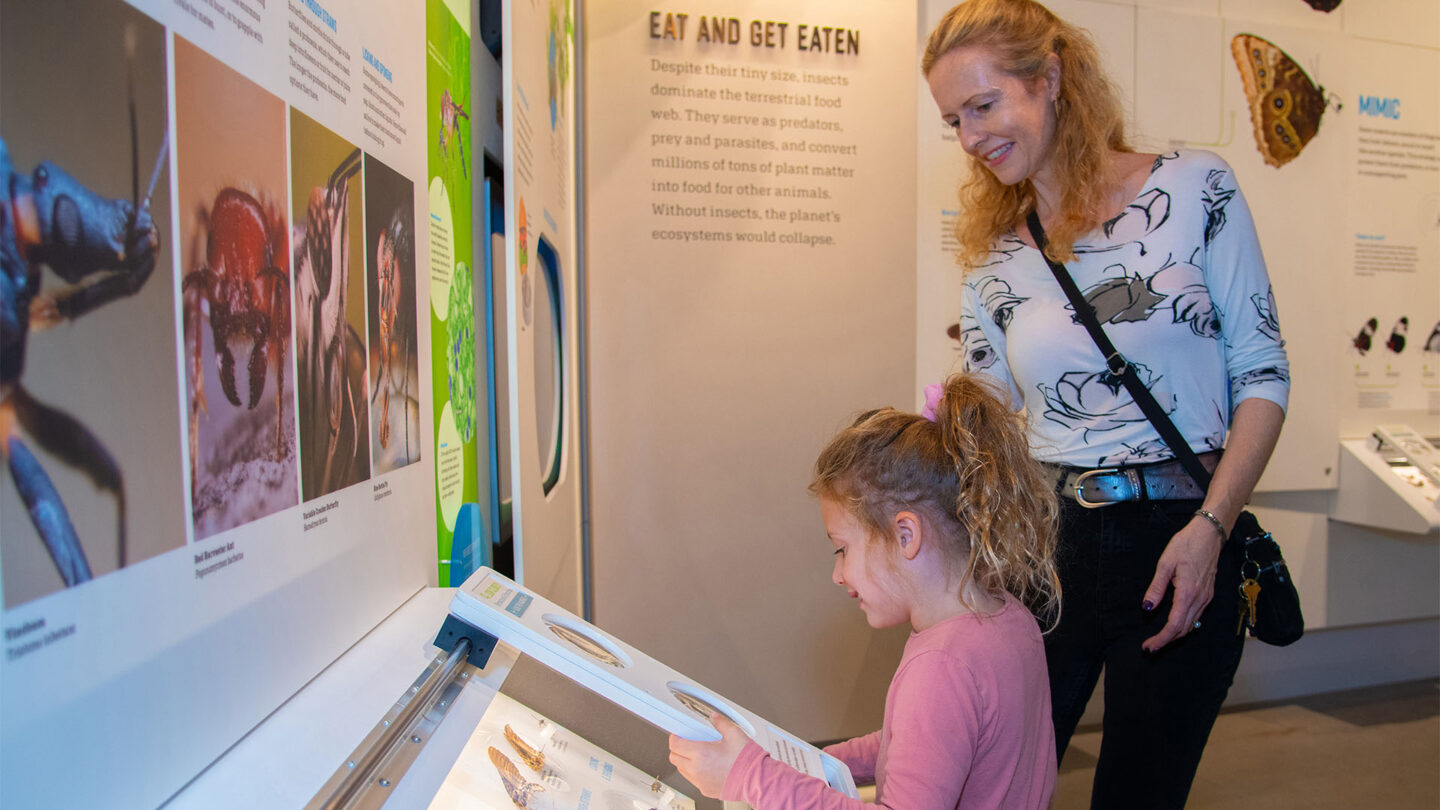
Sliding magnifiers allow visitors to study pinned specimens up close
Denis Finnin/AMNH
Project Details
Design Team
American Museum of Natural History (In-House)
Photo Credits
Alvaro Keding/AMNH, Denis Finnin/AMNH
Open Date
May 2023

